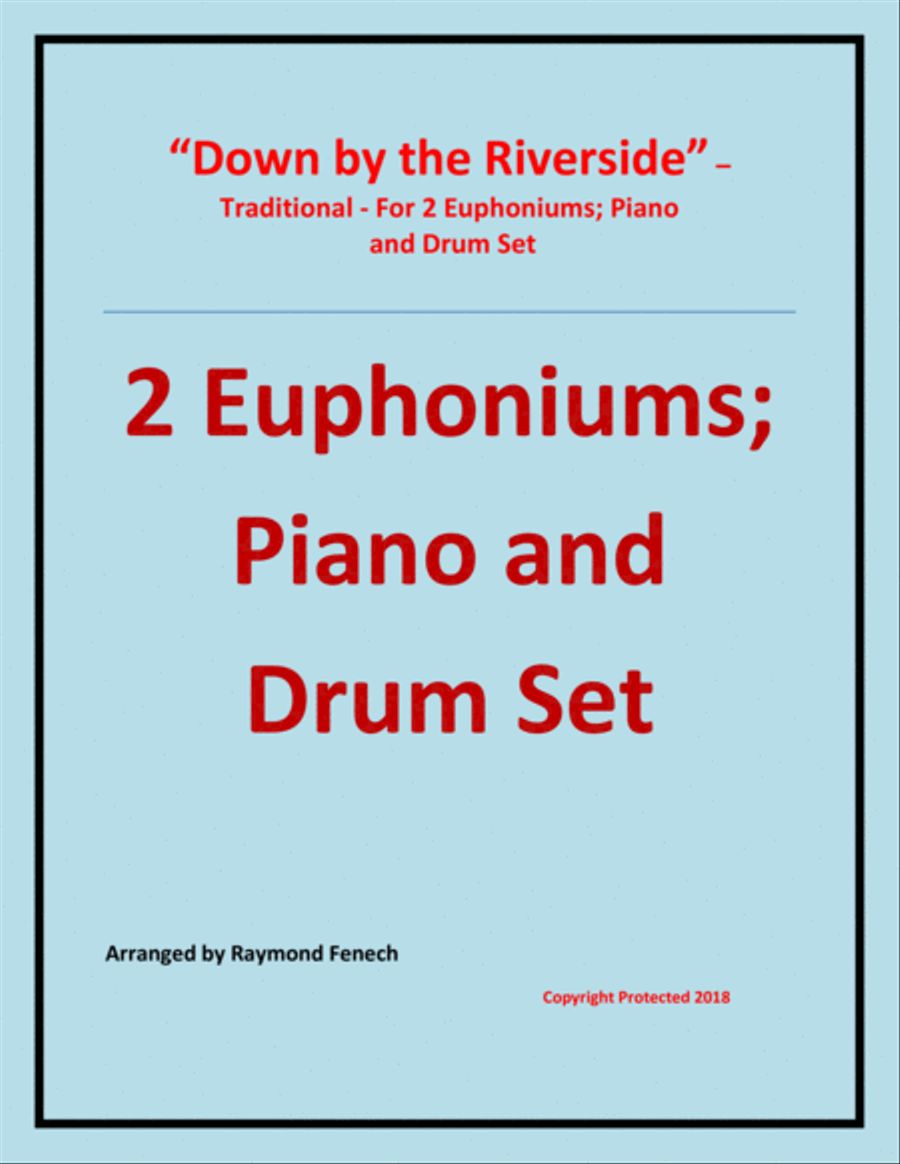Instrumental Duet,Piano Euphonium,Instrumental Duet,Piano - Level 3 - Digital Download SKU: A0.760368 Composed by Traditional. Arranged by Raymond Fenech. Easter,Jazz,Patriotic,Rock,Wedding. Score and parts. 18 pages. Raymond Fenech #3591487. Published by Raymond Fenech (A0.760368). Down by the Riverside (also known as Ain't Gonna Study War No More and Gonna lay down my burden) is a Negro spiritual song. Its roots date back to before the American Civil War, though it was first published in 1918 in Plantation Melodies: A Collection of Modern, Popular and Old-time Negro-Songs of the Southland, Chicago, the Rodeheaver Company. The song has alternatively been known as Ain' go'n' to study war no mo', Ain't Gwine to Study War No More, Down by de Ribberside, Going to Pull My War-Clothes and Study war no more This arrangement is very ideal for school concerts. The level is Intermediate and the duration is 2.39minutes.
